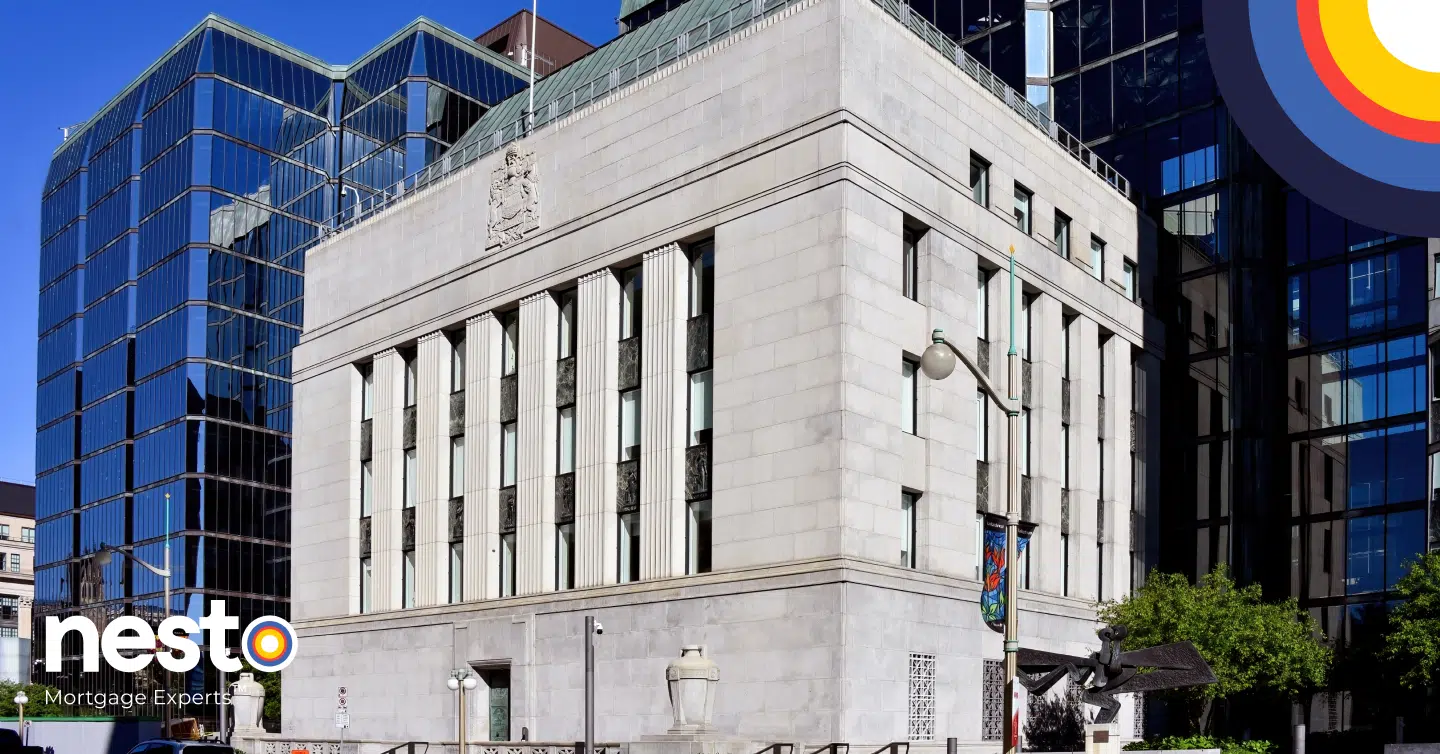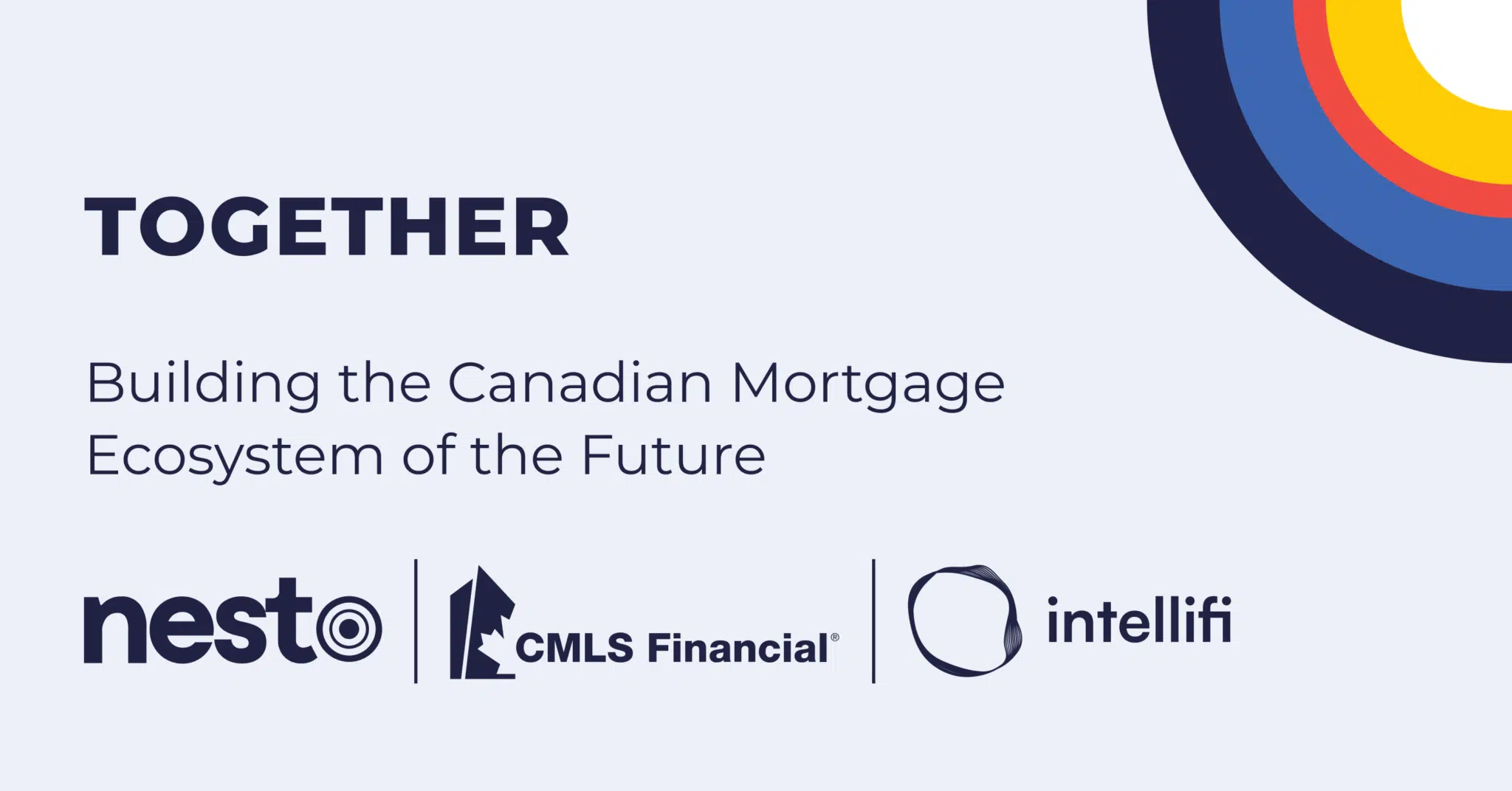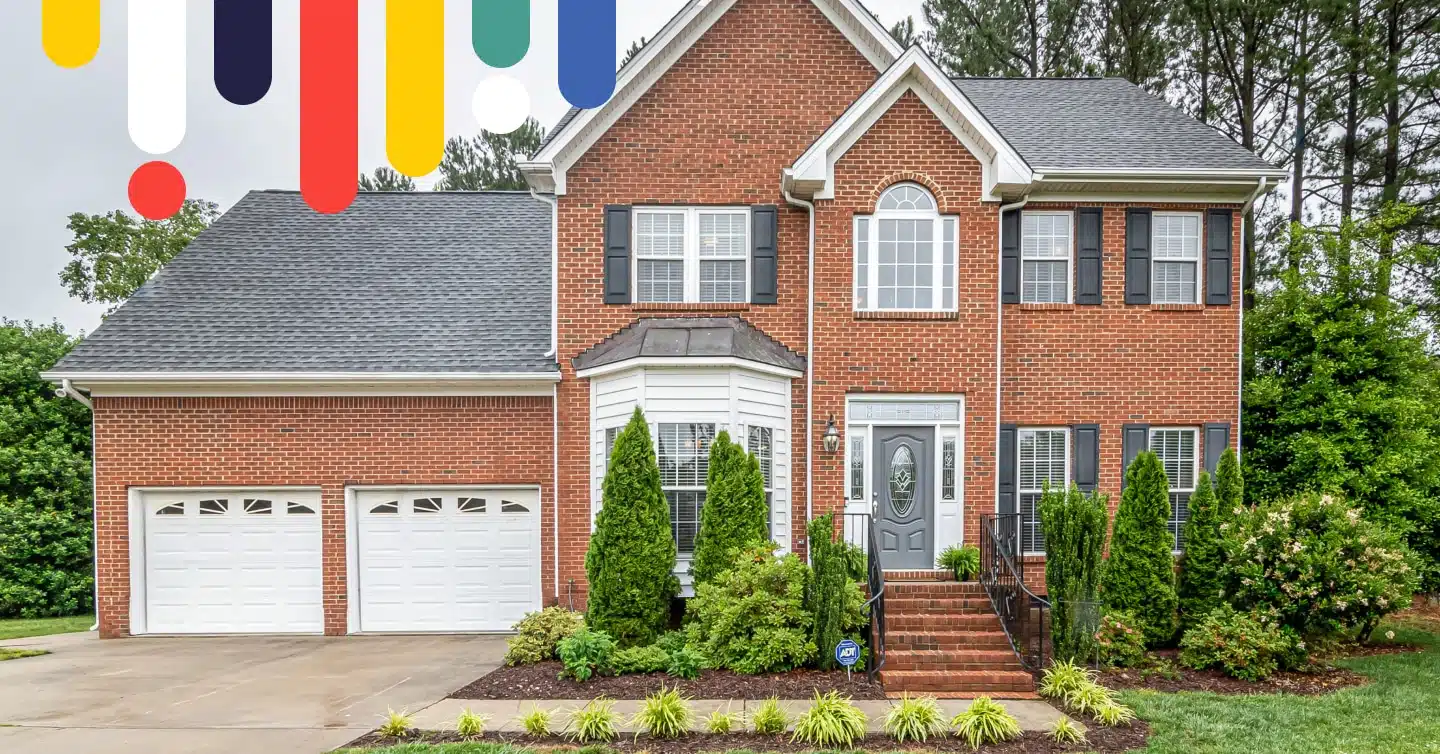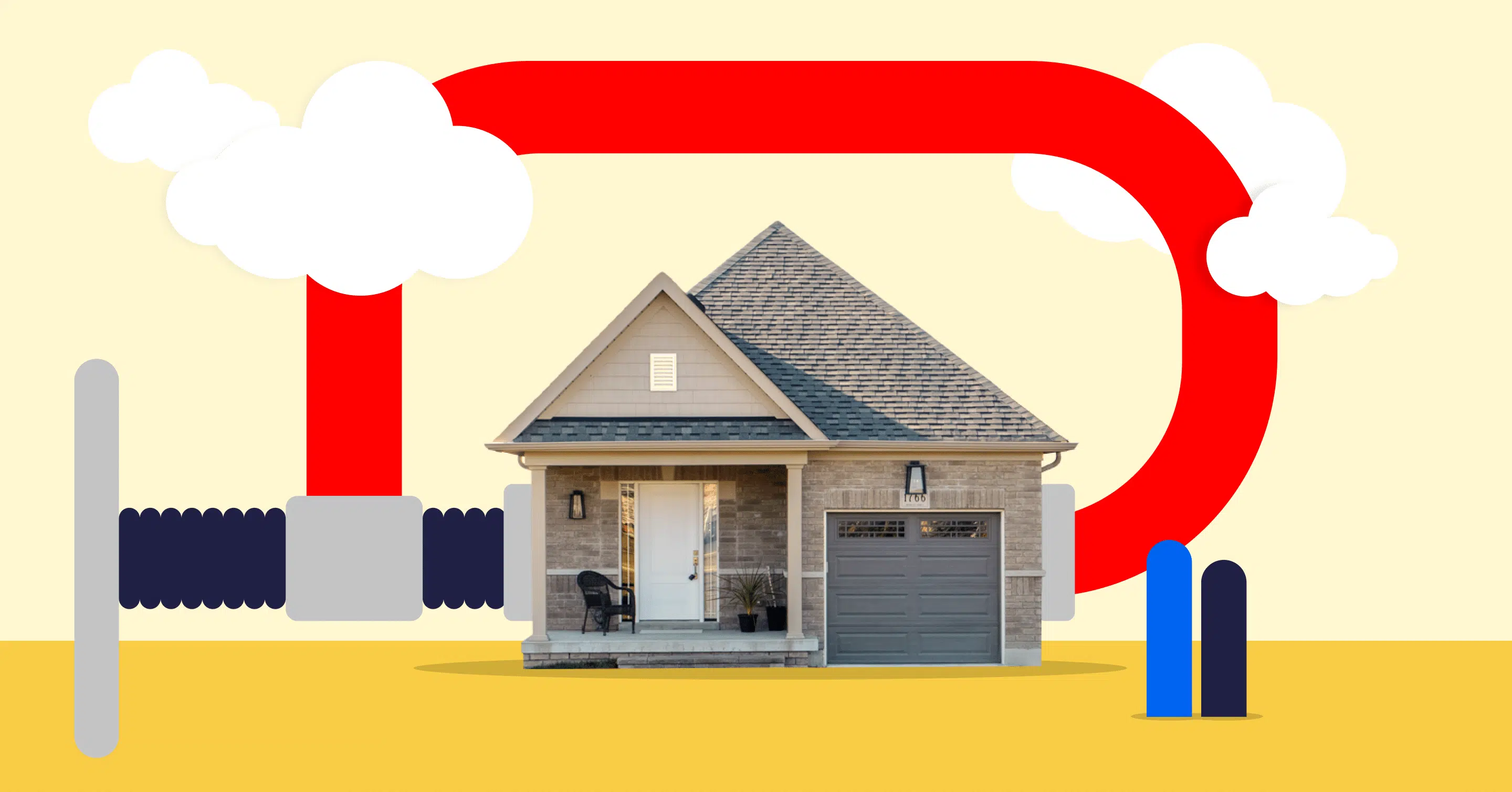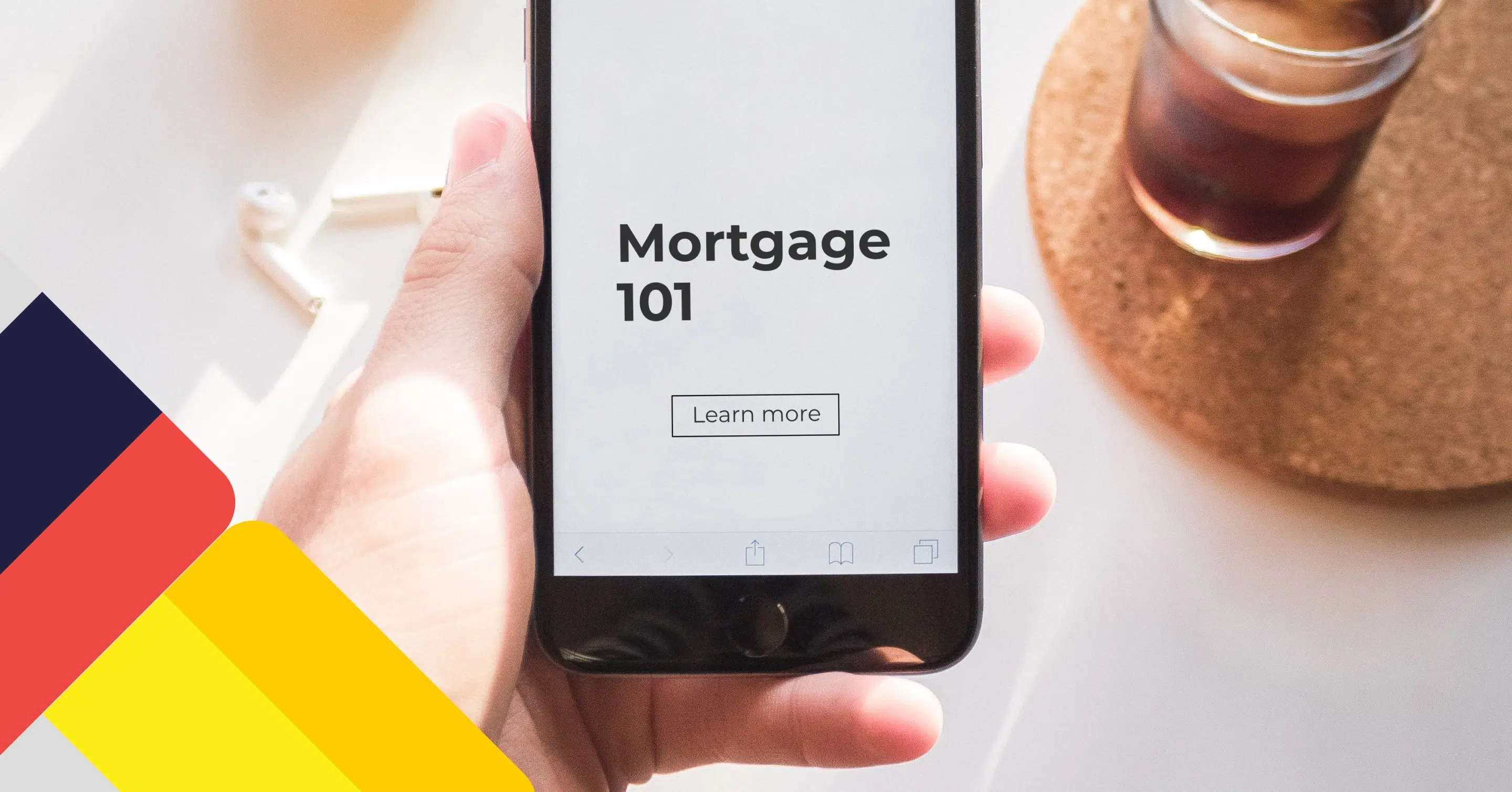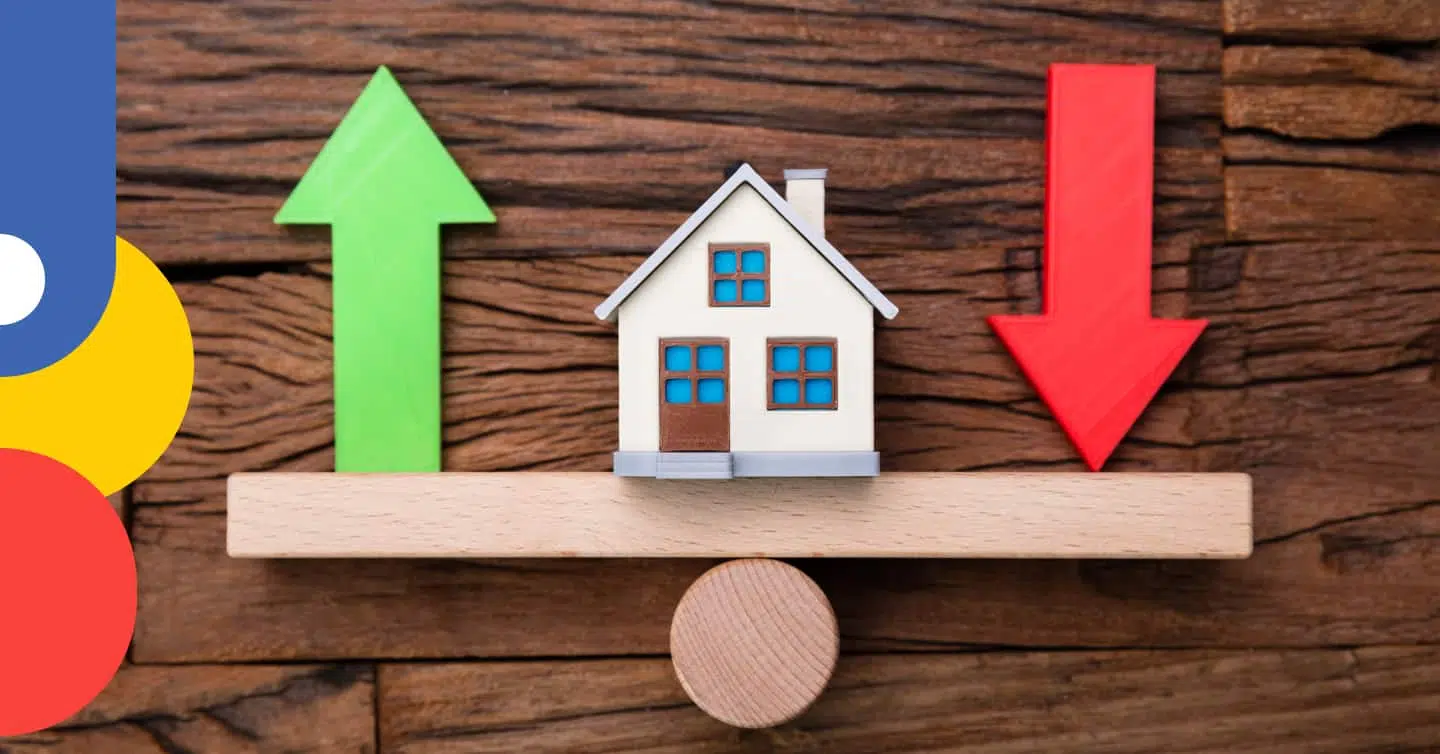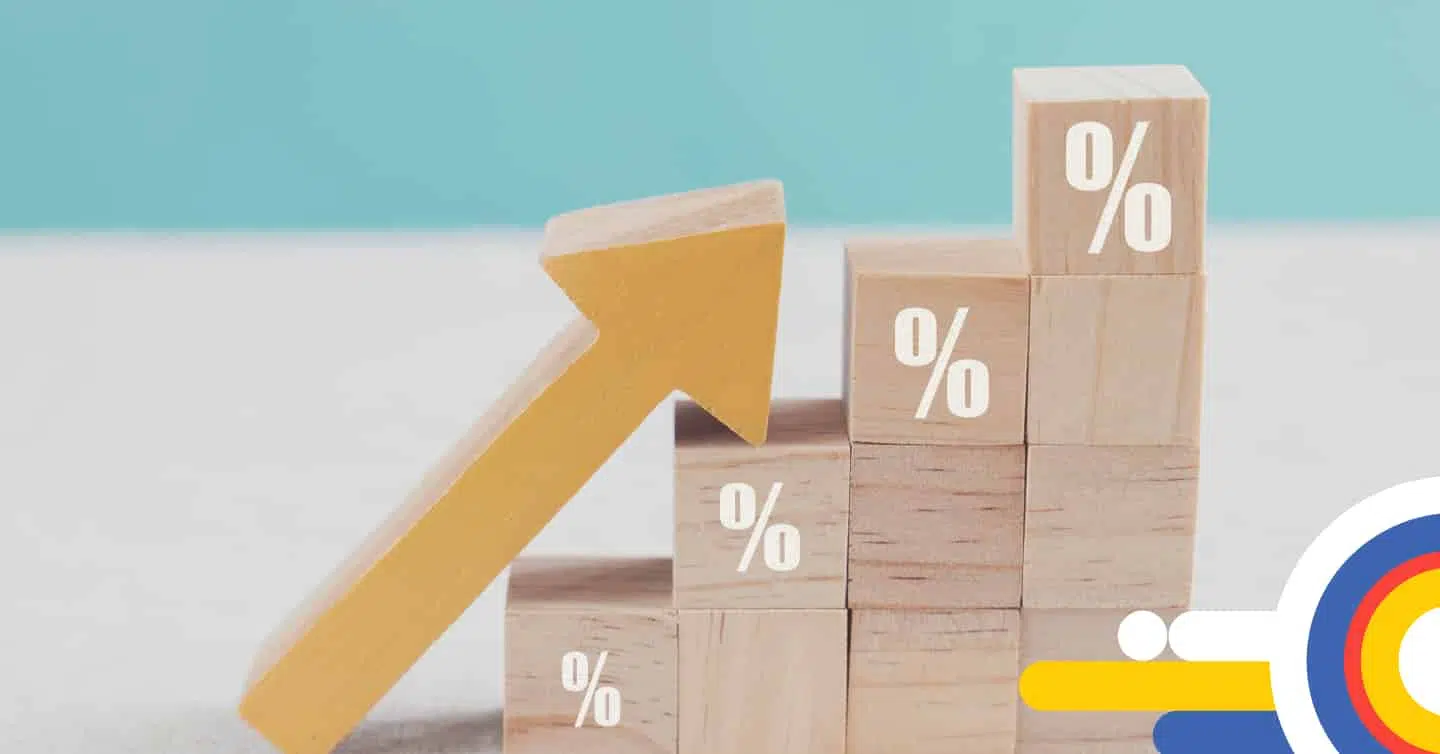Mortgage Payment Calculator
nesto’s lowest vs Big Bank insured mortgage rates
Results
For today, July 3, 2025, nesto’s {term}-year {type} mortgage rate is {bps} bps ({bps_percent}) lower than the similar average at Canada’s Big 6 Banks. On a {mortgage_ammount} mortgage over a {amortization_period}-year amortization, with nesto your monthly payment would be {nesto_monthly_payment}, saving you up to {monthly_savings} on your monthly payment. This equals {savings_interest} in interest saved while allowing you to pay down {extra_payment} extra on principal over your term.
Calculating Your Mortgage Payment
As a homebuyer, many valuable resources are available to help you throughout the homebuying process. Online mortgage calculators are one of the most valuable tools for homebuyers, helping you quickly calculate various payments without complicated manual number crunching.
nesto’s online mortgage payment calculator will help you estimate mortgage payments alongside a corresponding amortization schedule.
Mortgage Industry Insights: July 2025
Bank of Canada Rate Announcement
The Bank of Canada’s (BoC) latest announcement on June 4th was a policy interest rate hold, leaving it unchanged at 2.75%. This continues to put a pause on the BoC easing cycle, as uncertainty and unpredictability caused by fluctuating tariffs and ongoing trade negotiations erode consumer and business confidence.
The Governing Council decided to hold the rate due to high uncertainty around US tariffs, a softer Canadian economy, and unexpected recent inflation data until the impact of US trade policies is clearer. The BoC stated that its focus is on ensuring that Canadians continue to have confidence in price stability during this period of global upheaval, aiming to support growth while keeping inflation under control.
While inflation has eased, the growth in shelter costs, particularly rent and mortgage interest costs, is currently the most significant contributor to total inflation. The Governing Council continues to monitor core inflation numbers when assessing policy rate decisions to ensure sustained downward momentum in inflation.
The next announcement will be on July 30th. Using nesto’s proprietary overnight index swap and forward rate calculation data, bond markets are currently pricing a probability of a 25 basis point cut.
Real Estate Market Update
On June 16th, the Canadian Real Estate Association (CREA) released its May home sales data. The data showed that home sales rose 3.6% between April and May. This marks the first gain since last November and was led by activity in the Greater Toronto Area (GTA), Calgary, and Ottawa.
May’s home sales activity reported that new listings rose 3.1% month-over-month. Home prices have stopped falling, growth is stabilizing nationally, and more buyers and sellers have entered the market in May compared to April.
CPI Inflation Update
Statistics Canada’s latest inflation data, released on June 24th, showed the Consumer Price Index (CPI) rose 1.7% year-over-year in May, matching the 1.7% increase in April. This was due to smaller price increases for rent and a decline in travel tours, which put downward pressure on the CPI this month. Smaller declines for gas and cellular services put upward pressure on CPI.
How to Use a Payment Calculator to Calculate Your Mortgage Payments
To get started with a mortgage calculator in Canada, you will need to input some details about your home purchase, including the asking price, downpayment, amortization, and payment frequency. Depending on your downpayment, the calculator will also show you if mortgage default insurance (CMHC) is required and how much you will pay for the premium.
- Asking Price (New Purchase Only): Enter the home’s purchase price here.
- Current Property Value (Refinance and Renewal Only): Enter the current value of your home here if you are looking to refinance or renew.
- Mortgage Balance (Refinance and Renewal Only): Enter the remaining balance on your mortgage here if you want to refinance (your remaining balance should include any additional amount for your equity takeout if applicable) or renew.
- Province (Refinance and Renewal Only): Enter the province where the property is located.
- Downpayment (New Purchase Only): Enter the amount you saved for a downpayment here, or enter the percentage you wish to put down on the home.
- Amortization Period (New Purchase Only): This is the time it takes to pay off the mortgage, typically 25 or 30 years, depending on the downpayment amount. Enter the length of time you want to take to pay off your mortgage completely.
- Remaining Amortization (Refinance or Renewal Only): Enter the remaining time on your mortgage here. For refinances, you could increase your amortization back to 25 or 30 years without impacting your mortgage rate.
- Payment Frequency: This is how many times per month you wish to make mortgage payments. You can choose monthly, semi-monthly (2x a month), bi-weekly (every 2 weeks), and weekly. You can also accelerate payments by choosing accelerated weekly or bi-weekly to speed up the time it takes to pay off the mortgage.
- Mortgage Rate (Optional): If you don’t have a rate yet, you can use the pre-selected rate or enter your rate here if you have already been offered one. Multiple factors determine your preselected rate, but most importantly, your transaction type (purchase/renewal/refinance) and your loan-to-value (LTV) ratio make the biggest impact.
- Annual Property Taxes (Optional): Enter the annual property taxes for the property if you wish to estimate your total mortgage payments, including property taxes. This is useful for budgeting purposes.
- Monthly Condo/Maintenance Fees (Optional): If you are purchasing a condo, add the monthly maintenance fee here to estimate total mortgage payments, including the maintenance fee. This is useful for budgeting purposes.
Example Calculation of a $500,000 Mortgage in Canada
To calculate mortgage payments without the use of an online calculator, you can use the formula:
M = P [ i(1 + i)^n ] / [ (1 + i)^n – 1 ]
- M is your mortgage payment: This will be a monthly, semi-monthly, bi-weekly, or weekly amount.
- P is your principal: This is your total mortgage amount after deducting your downpayment. If you put down less than 20% as a downpayment, you must add your mortgage default insurance premium to the mortgage amount if you do not plan to pay it upfront in cash.
You can find out your premium by calculating your loan-to-value (LTV) ratio and using the chart from CMHC to locate the premium. Once you know the percentage, you can calculate the premium as follows:
Premium Amount = (Mortgage Amount – Downpayment) x Premium
- i is your interest rate: This will be the interest rate you have been offered.
- Monthly interest rate / 12
- Semi-monthly interest rate / 24
- Bi-weekly interest rate / 26
- Weekly interest rate / 52
- n is your number of payments: This will be the number of payments over the amortization period.
- Monthly payments x 12
- Semi-monthly x 24
- Bi-weekly x 26
- Weekly x 52
For example, to manually calculate monthly mortgage payments on a $500,000 mortgage using an interest rate of 4.79% and a 25-year amortization, you would use the following inputs:
- P = $500,000
- i = 0.0479
- n = 300
- M = 500,000 [(0.0479/12)(1 + (0.0479/12))^300 ] / [ (1 + (0.0479/12))^300 – 1 ]
- M = 500,000 [0.00399166666(1.00399166666)^300] / [1.00399166666^300 – 1]
- M = 500,000 [0.00399166666(3.3039420973)] / [3.3039420973 – 1]
- M = 500,000 [0.0131882355] / [2.3039420973]
- M = 500,000[0.0057242044]
- M = 2862.10 (rounded)
Your monthly mortgage payment would be approximately $2,862.10.
Today’s Best Mortgage Rates as of July 3, 2025
What is a Mortgage Payment?
A mortgage payment is the recurrent set amount of money paid at regular intervals to pay down your mortgage balance. A mortgage payment is made up of 2 main components: principal and interest. The mortgage payment is specific to the amortization period and the term during which the rate is guaranteed.
In the case of an adjustable-rate mortgage (ARM), where the payment may fluctuate, the interest rate won’t stay constant for the life of the mortgage, possibly not even for the term, so interest costs can only be estimated. Changes in the mortgage payment will not impact your amortization schedule if you choose an ARM.
For variable-rate mortgages (VRM), where the payment stays constant, interest costs cannot be estimated as the interest-carrying costs for the term will fluctuate based on changes in interest rates. This will affect the principal amount paid during the term and possibly the amortization over the life of the mortgage.
Interest costs can be easily calculated for fixed-rate mortgages where the principal and interest remain constant for the term. Since there are no rate fluctuations, once you’ve locked in, you will know exactly how much you will pay in principal and interest during your term.
Mortgage Default Insurance
If your downpayment is less than 20% of the purchase price or property valuation, you must account for high ratio default insurance premiums as part of your mortgage payment amount. You can avoid this by paying the premium upfront in cash or making a downpayment of 20% or more to avoid the insurance.
Mortgage Default insurance is provided by one of Canada’s 3 high ratio default insurers, Canada Mortgage Housing Corporation (CMHC), Sagen (GE) or Canada Guaranty (CG). It is only available for properties with a purchase price or valuation under $1 million. If you plan on purchasing a home over $1 million, you must make a downpayment of 20% or more for a conventional mortgage.
Factors That Can Affect Your Mortgage Payments
Several factors can affect your mortgage payments. These include:
- Credit Score: A minimum score between 680 and 720 is needed to get the best rates depending on the mortgage solution and lender.
- Subject Property Location: Residental mortgage rates apply only to residentially zoned properties.
- Purchase Price or Valuation: A higher borrowed amount means higher mortgage payments. A higher downpayment will lower your borrowed amount and make qualifying easier.
- Loan Amount: The loan amount will be net of any downpayment made before any applicable default insurance premiums are added. A minimum downpayment of 5% is required on the first $500,000 purchase price/valuation, and 10% is required on any remaining amount over $500,000. A 20% downpayment on the full amount is required if the purchase price/valuation is $ 1,000,000 or more.
- Downpayment: A higher downpayment will reduce the loan amount and lower mortgage payments.
- Interest Rate: Higher interest rates will mean larger mortgage payments. Interest rates will change based on mortgage amount as the ratio of the purchase price/home valuation (known as loan-to-value (LTV) ratio).
- Amortization Period: The longer the amortization period selected, the lower mortgage payments will be, but you will pay more in interest over the life of the loan. The shorter the amortization period, the higher mortgage payments will be, but you will save on interest-carrying costs over the life of the loan.
- Loan-to-Value (LTV) Ratio: The LTV determines mortgage eligibility and will affect the interest rate offered and the mortgage default insurance premium. A higher LTV ratio means a higher mortgage payment.
Using a Payment Calculator to Lower Your Mortgage Payment
There are a few options available to reduce your mortgage payments. You can extend your current amortization or make a prepayment, allowing you to re-amortize to the original remaining amortization after the prepayment is made. If you find a lower mortgage rate and the penalty to break your current term is less than the cost savings, you could early renew or refinance your mortgage.
Ways to Pay Off Your Mortgage Faster
Paying off your mortgage faster may not always be possible or in your best interest, depending on market conditions and your financial situation. However, some steps you can take could save you thousands in interest and help reduce the time it takes to pay off your mortgage.
Prepayment privileges allow you to make extra payments directly to your mortgage’s principal portion. Many prepayment options are available with limitations set based on the lender and mortgage solution. Overall, any prepayments on your mortgage will save you time (reduced amortization) and money (interest), helping you become mortgage-free faster.
There are several ways to take advantage of prepayments, including:
- Lump Sum Payments: These can be made as a single lump sum payment once a year at any time, on the anniversary date of the mortgage, or in the form of multiple smaller lump sum payments throughout the year as long as you do not exceed your lender’s allowable amount and schedule.
- Double-Up Payments: This option allows you to automate the lump sum payments to double up and match your regularly scheduled payments.
- Increase Regular Payments: Depending on the lender, you can increase your regular mortgage payments by the percentage of the allowable prepayment privilege each year, on or before your anniversary date. For example, if you have a 10% prepayment privilege, you can increase your regular mortgage payments by 10% once a year.
- Payment Frequency: While technically not a prepayment privilege, this option allows you to accelerate your weekly or bi-weekly payments, reducing your amortization by a few years and reducing interest-carrying costs. You will have the semi-monthly payment amount applied 26 times a year for accelerated bi-weekly payments. In comparison, accelerated weekly payments are half the semi-monthly amount applied 52 times a year.
Frequently Asked Questions
How do I use a mortgage payment calculator?
To use a mortgage payment calculator, start by choosing the type of mortgage (new, refinance, renewal). Then, fill out the mortgage details (asking price, downpayment, amortization, payment frequency, interest rate, optional taxes, fees, etc.).
The calculator will provide a payment summary that breaks down the total mortgage payment based on the frequency you selected, the amount of mortgage default (CMHC) insurance that will be added to the mortgage amount (if required), as well as the principal and interest paid over the term and amortization.
The amortization schedule tab will show you a breakdown of the total principal and interest paid and the remaining mortgage balance for the end of each year.
What is an amortization schedule?
An amortization schedule is the life of the mortgage. This is the total time it takes to fully pay off the principal and interest on the borrowed amount. Amortizations are up to 25 years on mortgages with down payments of less than 20%, while mortgages with down payments of more than 20% can typically go up to 30 years or more, depending on your choice of mortgage solution and lender.
Amortization schedules will help you see your progress toward becoming mortgage-free. At any point during the amortization period, you can see what portion of each mortgage payment goes toward the principal and interest. Once you reach the half-life of your mortgage, you’ll notice that a higher proportion of your payment goes to your principal.
How does my income impact my mortgage payment?
Your income is one key factor that lenders use to determine how much they are willing to lend you for a mortgage. Lenders do this using debt service ratios, which show them whether you have the capacity to take on the debt and repay the mortgage.
The gross debt service ratio (GDS) is the amount of your pre-tax income that would be spent on household debts. They will look at the mortgage payment, property taxes, heating, and 50% of condo or maintenance fees (if applicable). Typically, the maximum allowable GDS ratio is 32% for uninsured mortgages and 39% for insured mortgages.
The total debt service ratio (TDS) is the pre-tax income you would spend to service all debts. In addition to the debts that make up the GDS ratio, TDS will also account for student or car loans, child or spousal support, and credit card or line of credit payments that you may have. Typically, the maximum allowable TDS ratio is 40% for uninsured mortgages and 44% for insured mortgages.
How do I calculate my monthly payment on a mortgage?
An online mortgage calculator is the easiest method for calculating your mortgage payment. You input the home price, down payment, loan term, and interest rate. The calculator then computes your monthly payment, including principal and interest. Payment calculators often include options to factor in other costs, such as property taxes, home insurance, and, in some cases, mortgage insurance.
What’s the difference between a high-ratio borrower and a low-ratio borrower?
A high-ratio borrower puts down less than 20% as a downpayment and has a loan-to-value (LTV) ratio of 80% or more. This type of borrower will require mortgage default insurance. A low-ratio borrower puts down more than 20% as a downpayment and has an LTV of less than 80%. This type of borrower will not require mortgage default insurance.
What is the most common mortgage payment schedule?
The most common mortgage payment frequency is the monthly payment. This is typically the default payment option, where mortgage payments are made once per month or 12 times a year.
Do people most commonly choose a 5%, 10% or 20% downpayment?
The most common downpayment depends on the borrower. Most first-time homebuyers (FTHB) will opt for the minimum downpayment option available, which is 5% on the first $500,000 and 10% on the remaining amount between $500,000 and $999,999. For borrowers in large cities where home prices are well above $1 million, a 20% downpayment or more would be required.
Why Choose nesto
At nesto, our commission-free mortgage experts, certified in multiple provinces, provide exceptional advice and service that exceeds industry standards. Our mortgage experts are non-commissioned, salaried employees who provide impartial guidance on mortgage options tailored to your needs and are evaluated based on client satisfaction and advice quality. nesto aims to transform the mortgage industry by providing honest advice and competitive rates using a 100% fully digital, transparent, seamless process.
nesto is on a mission to offer a positive, empowering and transparent property financing experience – simplified from start to finish.
Contact our licensed and knowledgeable mortgage experts to find your best mortgage rate in Canada.
Browse Calculators by Location:
- Mortgage Calculator Alberta
- Mortgage Calculator Manitoba
- Mortgage Calculator Newfoundland
- Mortgage Calculator Nova Scotia
- Mortgage Calculator Quebec


